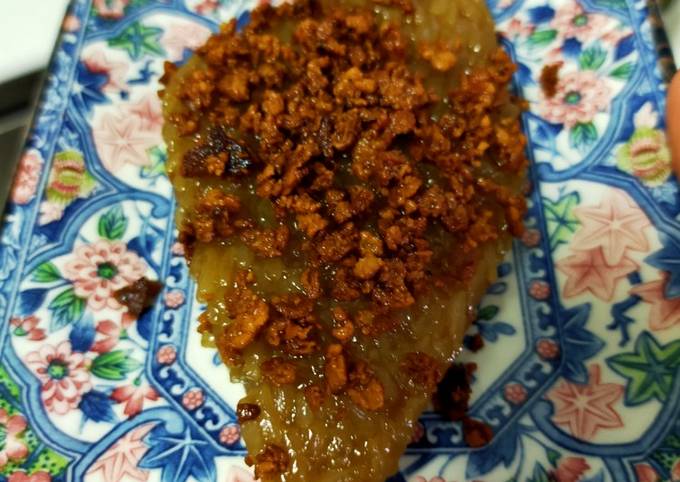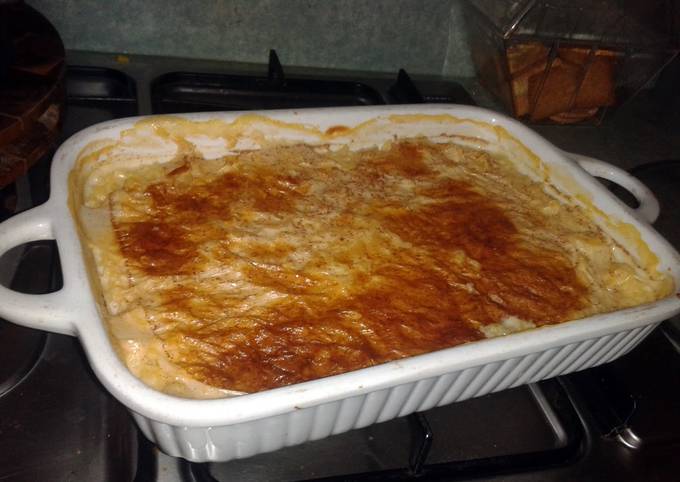
Hello everybody, hope you are having an amazing day today. Today, I’m gonna show you how to make a special dish, filipino glutinous rice cake(biko). One of my favorites food recipes. For mine, I am going to make it a little bit unique. This is gonna smell and look delicious.
Filipino Glutinous Rice Cake(Biko) is one of the most popular of recent trending meals in the world. It is simple, it’s quick, it tastes yummy. It’s appreciated by millions every day. They’re nice and they look wonderful. Filipino Glutinous Rice Cake(Biko) is something that I’ve loved my entire life.
Biko is a rich, chewy Filipino rice cake made with sticky rice, coconut milk, and dark sugar. Traditionally served in a round, shallow bamboo tray lined with banana leaves known as a bilao, biko belongs to a category of sweets called kakanin, which is made up entirely of rice cakes. Biko (pronounced bee-koh), a rice cake, is a native Filipino delicacy or 'kakanin' where glutinous rice is cooked with coconut milk and brown sugar then topped Latik. The latik can be either in curd form or syrup.
To get started with this recipe, we have to prepare a few components. You can cook filipino glutinous rice cake(biko) using 6 ingredients and 7 steps. Here is how you can achieve that.
The ingredients needed to make Filipino Glutinous Rice Cake(Biko):
- Prepare 1 kg. Glutinous Rice
- Take 250-300 grams brown sugar
- Get 2 cups coconut milk (divided into 2cups)see note 1.
- Take Pandan leaves or vanilla essence (optional)
- Make ready note 1
- Make ready 1 cup for toppings(latik)1cups for our sugar/Glutinous rice
It is made of glutinous rice, coconut milk, coconut cream, and brown sugar, topped with caramelized coconut cream. It is often served during fiestas, birthdays, Christmas, New Year, and any other special events. There are many variations on biko, but this biko recipe will give you a sweet dark brown-sugared sticky rice cake topped with a caramelized coconut sauce and latik (crispy coconut curds). Each decadent bite of this traditionally Filipino dessert is filled with flavors of palm sugar, dark brown sugar, and rich coconut.
Instructions to make Filipino Glutinous Rice Cake(Biko):
- Wash and cook the glutinous rice just like the way we cook normal rice but lessen the water,add the clean pandan leaves.
- While cooking the glutinous rice we can cook now our latik or toppings,in a frying pan pour the coconut milk or coconut cream.let it boil and simmer then stir constantly to avoid burning,when the oil extracted already and golden brown color appear it's done.separate the coconut oil from the latik.
- When glutinous rice was cooked,we can now start cooking
- In a wok pour the coconut milk, let it boil..then add the sugar,stir to dissolve the sugar and let it boil again for a couple of minutes.
- When it's thick already,we can now add our cooked glutinous rice and constantly stir or mix it until its done,we can say it is done when we stir it and it's so sticky or almost all of the glutinous rice was stick on your ladle.
- Quickly transfer to a greased tray(use the coconut oil for greasing the tray)then flatten it.
- Put our toppings (latik),then serve
There are many variations on biko, but this biko recipe will give you a sweet dark brown-sugared sticky rice cake topped with a caramelized coconut sauce and latik (crispy coconut curds). Each decadent bite of this traditionally Filipino dessert is filled with flavors of palm sugar, dark brown sugar, and rich coconut. Transfer the rice to a small pot or Dutch oven. Sticky, chewy, and oh so sweet, biko is a delicious treat that Filipinos all across the world enjoy. Biko is a type of sticky rice cake, otherwise known as kakanin.
So that’s going to wrap this up with this exceptional food filipino glutinous rice cake(biko) recipe. Thank you very much for reading. I am sure that you will make this at home. There is gonna be more interesting food in home recipes coming up. Remember to bookmark this page on your browser, and share it to your loved ones, colleague and friends. Thank you for reading. Go on get cooking!

